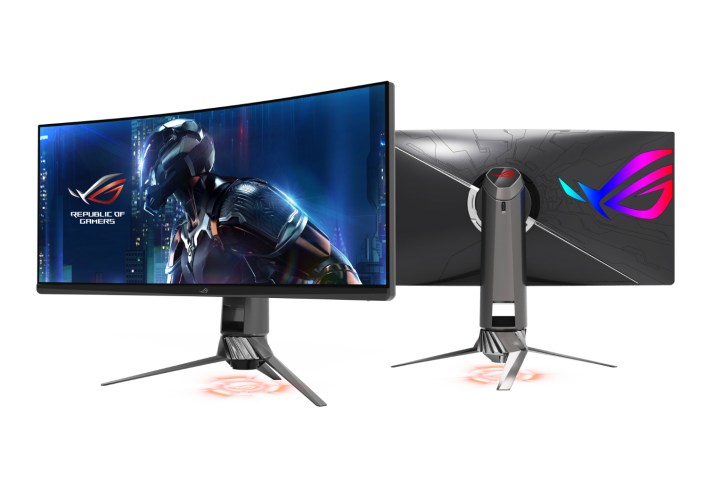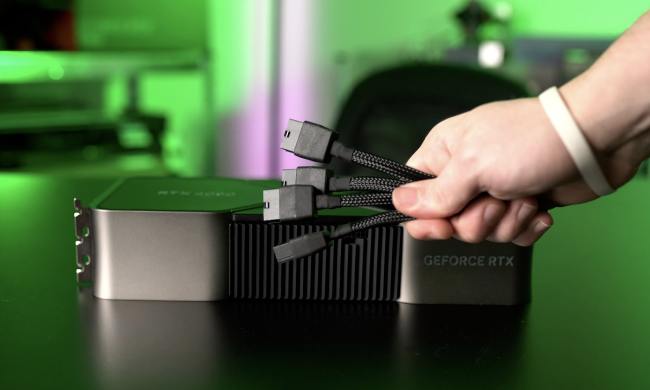
PC displays are another hot topic, in general, and Asus has another new monitor coming soon to join its growing line of gaming options. The ROG Swift PG35VQ is a new curved ultrawide display that Asus bills as its largest ever and it is clearly aimed at gamers with a super fast refresh rate.
To begin with, the PG35VQ is a 35-inch display with a 21:9 aspect ratio and UQWHD (3,440 x 1,440) resolution. It is also curved to bring the action closer and provide a more panoramic experience. Minimal bezels complete the immersive design by maximizing the percentage of actual display versus using multi-monitor arrays to achieve the same widescreen effect.
The PG35VQ also supports Nvidia G-Sync and offers a super fast refresh rate of 200MHz and an effective 5ms response time. That translates to the monitor’s ability to keep up with today’s fastest GPUs in modern gaming titles, ensuring that the display can maintain performance without perceptible stuttering and tearing.
Asus also paid attention to display quality with the PG35VQ. High dynamic range (HDR) support conforms to the HDR10 standard for a wide palette and high contrast. The monitor uses quantum dot technology for smooth gradients and support for the DCI-P3 color space, making the display of interest to creative professionals in addition to gamers.
The PG35VQ is also a bright display at 1000 nits while maintaining deep blacks via localized dimming. There are 512 individual LEDs lighting the screen, each of which can be controlled independently to pinpoint specific portions of an image. Finally, the integrated LED lighting system adds a splash of color to the design with Asus Aura Sync support.
Asus has not yet announced pricing or availability for the PG35VQ. When it does arrive, however, it is likely to be one of the more popular options for gamers who also like to get some creative work done — albeit only those with some serious money to spend.


